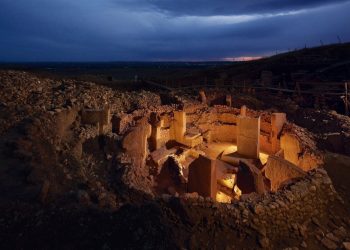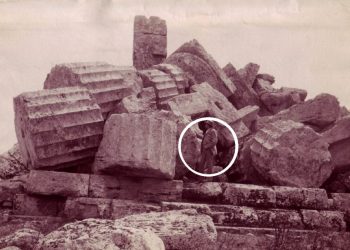Vincent van Gogh’s masterpiece may hold the key to understanding a complex natural phenomenon.
For over a century, art lovers have marveled at the breathtaking swirls and vibrant colors of Starry Night, a painting that has solidified Vincent van Gogh as one of the most influential artists in history. Yet, recent scientific research reveals that Van Gogh’s iconic creation is more than just a captivating artwork—it’s a window into the turbulent dynamics of nature itself.
Researchers from China and France have uncovered a fascinating link between the swirling patterns in Starry Night and atmospheric turbulence, a chaotic flow of fluids driven by temperature differences. Their findings, published in the journal Physics of Fluids, suggest that Van Gogh may have intuitively captured one of the most complex aspects of fluid dynamics: the way energy moves and dissipates across different scales.
The Intersection of Art and Science
As revealed by Popular Mechanics, at first glance, it might seem impossible for a 19th-century artist to depict something as scientifically complex as turbulence, especially without formal knowledge of the subject. However, the researchers’ analysis indicates otherwise. By closely examining the luminance—or relative brightness—of the colors in the painting, the team discovered that the swirling shapes and varying shades align with Kolmogorov’s theory, a fundamental concept in atmospheric physics.
Kolmogorov’s theory explains how energy cascades from large to small scales in turbulent systems. Larger eddies, or swirls, transfer energy to smaller ones, which in turn pass it down until it dissipates. This same pattern can be seen in Starry Night, where the large, dramatic curves of Van Gogh’s brushstrokes give way to smaller, more intricate details that mimic this energy flow.
The researchers also found that the relative brightness of Van Gogh’s colors mirrors what is known as Batchelor’s scaling—a principle describing how energy behaves at microscopic levels. Seeing both Kolmogorov’s theory and Batchelor’s scaling reflected in the painting was an unexpected revelation for the scientific community, as this duality is rare even in natural systems.
A Deeper Look into Van Gogh’s Genius
While the scientific discoveries add a new layer of appreciation for Starry Night, they also raise a thought-provoking question: How did Van Gogh achieve such a precise representation of turbulence? The answer, according to the researchers, likely lies in the artist’s keen observational skills. Living in a rural area during his most productive years, Van Gogh spent much of his time immersed in the natural world. His careful observation of cloud formations, swirling winds, and the nighttime sky may have given him an intuitive sense of how to depict these complex patterns.
Dr. Yongxiang Huang, one of the lead authors of the study, believes Van Gogh’s ability to convey such fluid motion speaks to the depth of his artistic insight. “It’s possible that Van Gogh understood turbulence through his close connection with nature, capturing its essence with an extraordinary level of accuracy,” Huang said.
The research suggests that Van Gogh may have unconsciously translated the chaotic beauty of the natural world into his artwork, reflecting physical principles that weren’t even fully understood in his time.
Implications for Art and Science
This discovery opens up exciting possibilities for both the art and scientific communities. It demonstrates how art, often considered an emotional or subjective medium, can provide insight into complex scientific concepts. Furthermore, it challenges the traditional boundaries between disciplines, showing that creativity and scientific inquiry can intersect in unexpected ways.
For scientists studying fluid dynamics, Van Gogh’s Starry Night offers a new perspective on how natural phenomena can be visualized and interpreted. Meanwhile, art historians may look at other masterpieces with fresh eyes, considering how the physical world may have influenced their creation in ways previously overlooked.
Van Gogh’s Starry Night has always stood out as a masterpiece of post-impressionism, but this study adds a remarkable dimension to its legacy. What was once seen purely as an expression of emotion and artistic genius now reveals an intricate connection to the physical world—a testament to the power of human creativity and observation.
This groundbreaking research not only elevates Van Gogh’s work but also underscores the importance of interdisciplinary studies. As we continue to explore the intersections of art and science, who knows what other hidden connections might emerge from the brushstrokes of history’s greatest artists?











